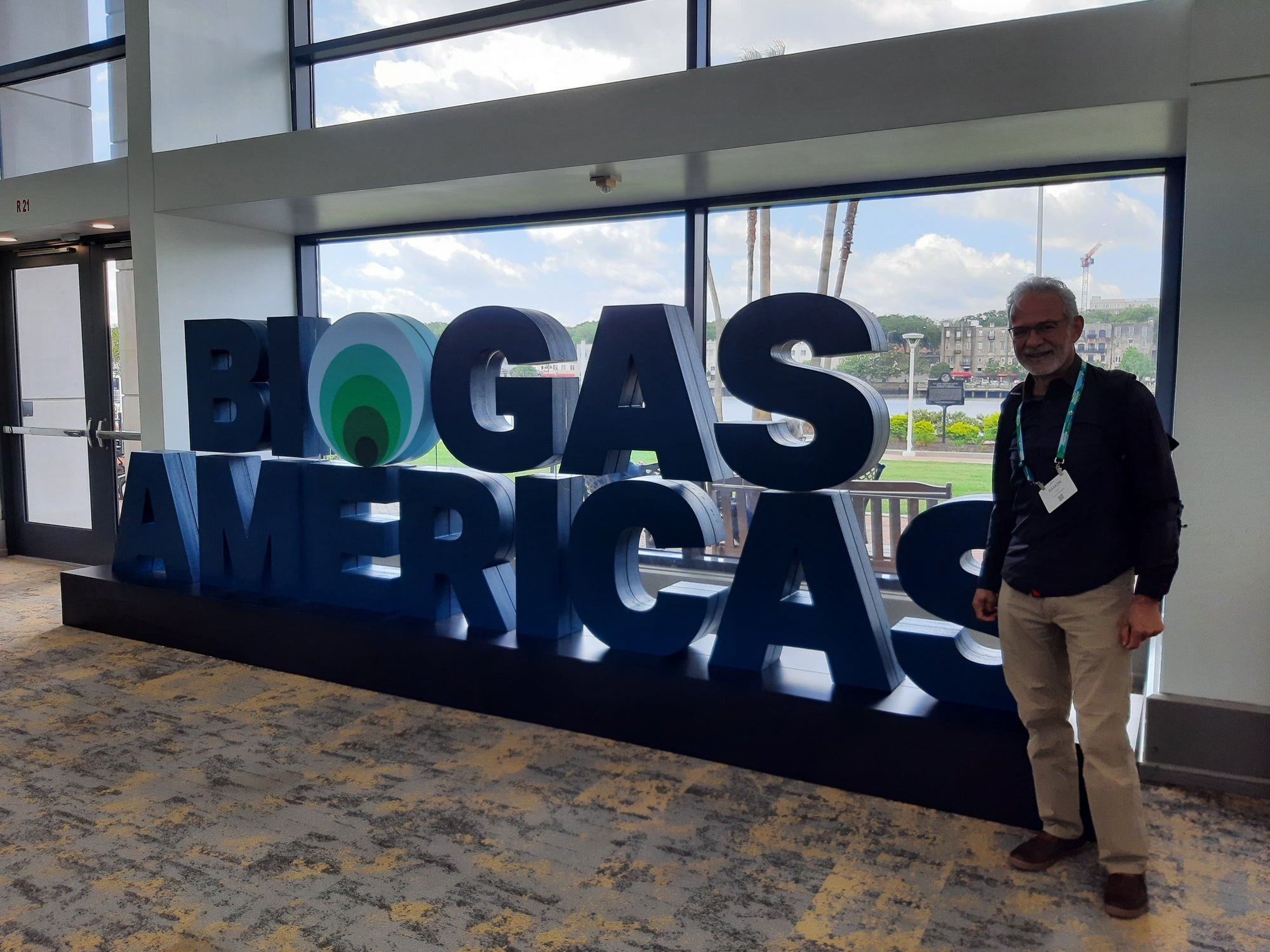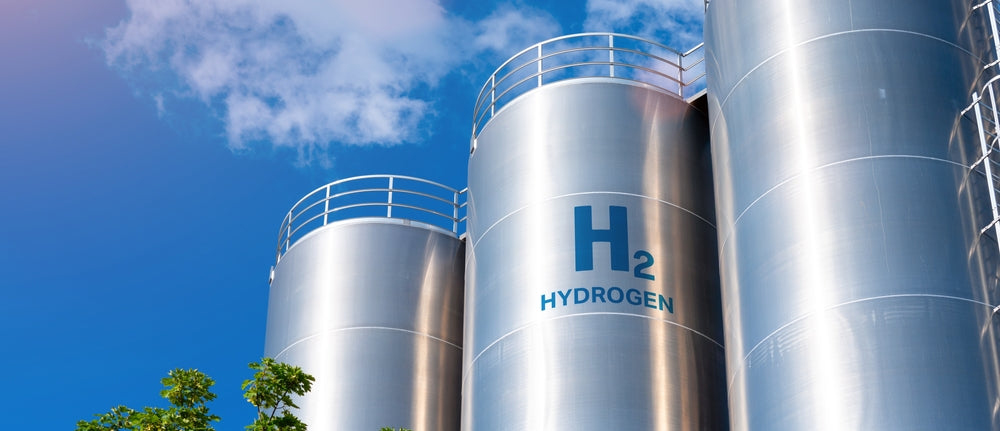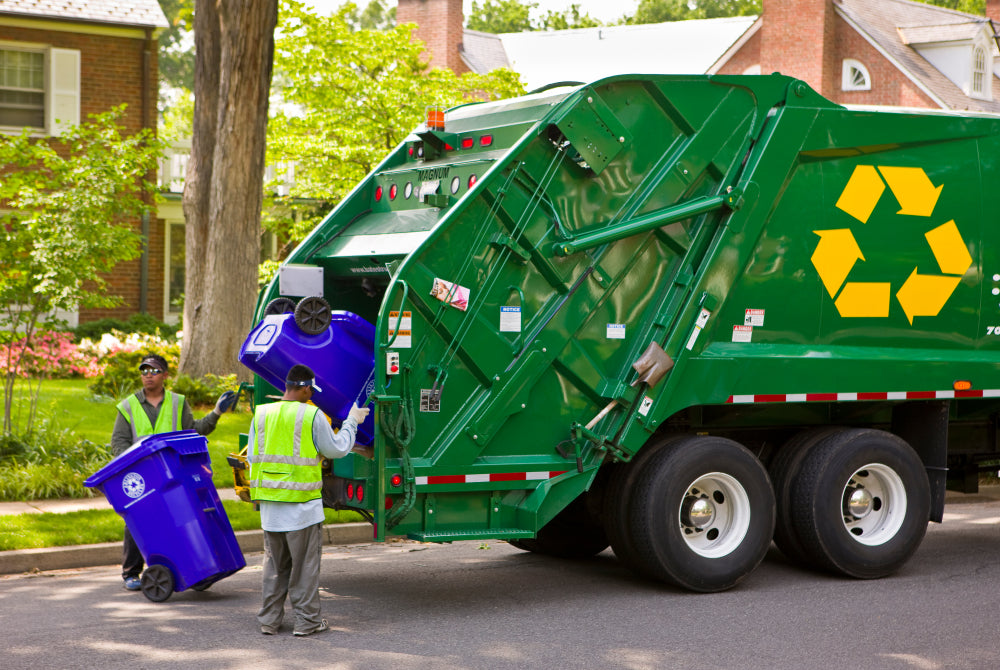Blog

Biogas Americas Conference 2024 Summary: My Experience
By Ramon Rivera:
Learning from the Leaders:This past week, I had the opportunity to attend the Operators Course at the Biogas Americas conference in Savannah. The experience was invaluable, largely due to the in-depth program led by esteemed industry experts Bernie B Sheff, PE, and Craig Frear, Ph.D. Their collective expertise provided a comprehensive understanding of the biogas industry.Turning Trash into Treasure:
A key highlight of the conference was the focus on biogas's potential to transform waste streams into clean energy. This innovative approach not only combats climate change but also produces cleaner fuels. Emphasis was placed on converting waste from dairies, food processing plants, and landfills into Renewable Natural Gas (RNG), a crucial step towards US energy independence.
The Science of Biogas Production:The scientific process of Biogas production was another fascinating aspect. The conference delved into acidogenesis, where the waste stream is broken down, setting the stage for methanogenesis. This latter process generates methane gas, which is then harnessed for energy production.Challenges and Considerations:The complexities of Biogas production were also acknowledged. One significant challenge is sourcing and maintaining consistent waste streams, which is critical for the efficient operation of Biogas systems.Technical Expertise on Display:Day two featured insights from James Kyzar, Sr. Project Engineer and Ben Sheff, Sr. Pipeline Engineer, Chris Noah, ME., and Scott Martin, Sr. Project Manager, on several technical topics:- Hydraulic systems: Essential for ensuring the smooth operation of digester systems.- Odor management: Strategies to control the unpleasant smells associated with waste processing.- CO2 and H2S removal: Techniques for purifying biogas by removing these unwanted gases.- RNG production efficiency: Methods to optimize methane output while minimizing volatile organic compounds (VOCs).The Importance of Calculations:The conference underscored the importance of precise calculations in determining the optimal waste composition for feeding digesters. This precision is key to ensuring process efficiency and achieving a good return on investment. This segment was led by Jessica Linville-LeRoy, PhD, whose expertise is highly regarded. The Importance of Safety:
The most important segment of the conference was the emphasis on safety for the welfare of both staff and the community. Ensuring safe operational practices and addressing potential hazards were prioritized to protect everyone involved in and around biogas facilities.In Summary:To encapsulate the conference's essence, Bernie Sheff, PE, aptly stated, “We are a 48-billion-dollar industry on what a bug can eat.” This quote highlights the enormous potential and economic impact of the Biogas industry, driven by the fundamental biological processes harnessed for energy production.

Buried Treasure: Natural Hydrogen Offers Clean Energy Promise
By Shane Marrs
Deep beneath the Earth's surface, a hidden bounty may hold the key to a cleaner future. Recent research suggests vast reserves of natural hydrogen exist, trapped in rock formations. The United States Geological Survey (USGS) estimates these reserves could be as high as five trillion tonnes, enough to meet global hydrogen demand for centuries.
This naturally occurring hydrogen, sometimes called "gold hydrogen," forms when water reacts with iron-rich rocks. Notably, two long stretches of such rock run through the US, from Kansas to Michigan.
Extracting this hydrogen could be a game-changer. "Gold hydrogen" production is believed to be cleaner and cheaper than traditional methods like steam methane reforming. The US government has already allocated funds to research extraction technologies.
However, challenges remain. Separating the hydrogen from other gases it's mixed with and creating infrastructure for transport are hurdles that need to be overcome. Additionally, leakage during extraction could negate the climate benefits of hydrogen as a fuel.
Despite the unknowns, researchers are optimistic. Investment in natural hydrogen production is expected to surge, with some calling it a "gold rush." While questions linger, the early data is promising, and natural hydrogen could play a significant role in decarbonizing the US energy sector.

Diamond Scientific Salutes our Florida Garbage Men
I recently attended the SWANA Florida Chapter Winter Conference 2024 in Lake Buena Vista, Florida, and it brought back memories of what I knew about solid waste in times of old and what I learned in the past two years.
I was hired into this industry a little over two years ago at the time of writing with barely any knowledge about solid waste. My background is in chemistry so I was focused on the use of analytical instruments for the solid waste industry.
I, like most of the human population, had no idea how intricate and complex it was to manage solid waste. From the "civilian" perspective, the county or city dispatched trucks to service the neighborhoods and business districts. Upon reaching capacity the garbage trucks would simply empty their bounty at the dump.
Over time the dump looked like a nasty mountain. Therefore, sod was placed over the trash to make it aesthetically pleasing. The pipes sticking out of the newly dressed mountain allowed gases to escape. Voila! A lovely little mountain to add depth to the flatness of Florida.
Under the mentorship and guidance of Ramon Rivera, our company CEO, I have been on a steep learning curve for all things pertaining to solid waste. Ray has been in the landfill business for almost 40 years. Needless to say, trying to cram 40 years of knowledge and experience into my brain for the last two years has been, shall I say, an adventure.
This new adventure expanded my vocabulary. Leachate has nothing to do with leeches. Wellheads are not for drawing clean, fresh water and a brown patch on the sod isn't because some animal decided to use that spot for a litter box.
As displayed in the presentations and discussions at the aforementioned SWANA conference, topics are almost endless when conversing about landfills.
Converting waste to energy.
Contaminating our groundwater and soil with cookware coatings, stain-resistant fabrics, etc.
Managing debris after a hurricane
Characterizing types of waste based on demographics
Using artificial intelligence (AI) for increased efficiency in waste collection
Communicating effectively with customers, co-workers, and policy makers
Updating the industry on upcoming legislation
Recycling alternatives
Two years ago these subjects would soar over my head. I was overwhelmed with the amount of information related to landfills; from what it took to physically create a landfill,
understanding the regulations to maintain that landfill, and knowing the mechanisms and machinery required to manage the landfill... and that didn't include all the ancillary processes like collecting and hauling the waste before reaching the landfill, managing staff and drivers, interacting with irate neighbors who didn't appreciate the sweet smell of success.
Solid waste is a dirty business and is often taken for granted by the general population. It's not too often you hear a "Thank you for your service!" to the garbage man. However, every once in a while when Mother Nature kicks us in the derriere and debris is scattered across the landscape, that's when the garbage trucks roll out like military tanks and restore civilization to order.
The next time you see one of those behemoth trucks lumbering by your house or you stop at a transfer station to drop off your old paint and broken furniture, offer a quick nod and salute in gratitude to the men and women who keep our society from descending into rot and decay.

